TL;DR
Using 100g net carbohydrates per day (85-100% of them around AM workouts), I was able to make the following lipid and metabolic changes:
- Triglycerides: 41 (down from 46 and 66)
- HDL: 56 (down from 66 and 59)
- LDL: 125 (down from 205 and 193)
- Total Cholesterol: 193 (down from 280 and 269)
- Non HDL: 69 (down from 214 and 210)
- HbA1c: 5.2 (back down from 5.4 and 5.2)
- Insulin: 2.2 (down from 3.0)
Worth it? We discuss.
Watch the video
If you don't feel like reading, you can listen to me discuss the results below:
A brief recap: Mike's Cholesterol Situation
It's been a few months since I posted my blood work after running a nearly zero-carb, "kind of carnivore" style diet in a blog post titled My LDL Cholesterol is High, But I'm Not Worried. Here's Why. You can also watch the associated YouTube video where I go over the data.
The long story short is that a very low carb, high-protein diet, coupled with my general leanness of ~13-14% bodyfat put me in a unique state where my triglycerides are low, my HDL cholesterol is high, but my LDL cholesterol is also high. This unique state is known as a "Lean Mass Hyper-Responder", or LMHR, a term coined by lipid scientist Dave Feldman.
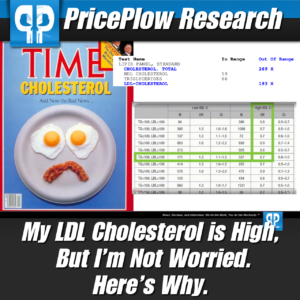
From the previous post: LDL Cholesterol is often used as a scare tactic to keep people away from low-carb diets. Turns out... it doesn't matter once you bring HDL high, insulin low, and triglycerides down! With that said... how many carbs is the right amount?!
Looking at four major observational studies on non-drugged individuals,[1-4] it turns out that despite my high LDL score, I'm actually in a very low risk group for cardiovascular disease -- especially since my fasting insulin levels and HbA1c levels are low. I wisely switched doctors after one wanted to prescribe me statins at 37 years old.
But with all that said, I still wasn't in the lowest risk group. While LDL isn't a very strong risk factor, it still stands as a weak one -- and all other things considered equal -- unless you're elderly, there's a great chance that lowering LDL while keeping HDL high and triglycerides low could be beneficial.
So at the end of the video, I hinted that perhaps I could do even better. Turns out that I could, but the results may be arguable.
More LMHR Data: An additional near-carnivore run-in diet
After getting the blood work shared in the previous post from March 13, 2019 (page 1, page 2, page 3), I continued tinkering with low-carb, but went even harder. I basically ate less than 10 carbs for a few weeks, then got an NMR LipoProfile test at LabCorp.
See the images below for the full results (important numbers follow afterward):
If you don't want to wade through images, these April 2019 numbers are below (compared against March 2019 originals shared in my original LDL post [page 1, page 2, page 3]):
My near-carnivore lipids:
- Triglycerides: 46 (down from 66)
- HDL: 66 (up from 59)
- LDL: 205 (up from 193)
- Total Cholesterol: 280 (up from 269)
- Non HDL: 214 (up from 210)
(additional NMR LipoProfile data available in the images above)
Known Ratios of Interest:
- Chol/HDLC: 4.24 (down from 4.56) (want to be under 4.5, 4.0 is even better)
- TG/HDL: 0.70 (down from 1.12) (want to be under 2.0, 1.2 even better)
Other important near-carnivore metabolic numbers
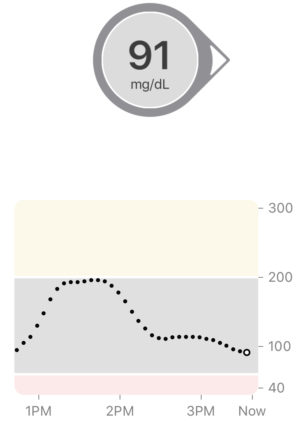
Never quite breached 200, but sure hung up there for a while. My body wasn't really prepared for this too well. As always, the ride down is never worth the ride up.
- HbA1c: 5.4 (up from 5.2)
- Insulin: 3.0 (want to be under 4.5)
- Homocysteine: 7.5
- cRP: 0.88
- Lp(a): 2
- Watch my near-carnivore Glucose Tolerance Test video (image to the right)
The Near-Carnivore Hormones
- Total Testosterone: 735 ng/dL (pretty high!)
- Free Testosterone: 7.6 pg/mL (low - reference is 8.7 - 25.1!)
All things told, I think these are incredible numbers. At this point, I am officially in the LMHR camp, since LDL went over 200 and that's often the threshold used. Free testosterone is of concern, but we'll deal with that too.
So what to do about that LDL? Can I get into the lowest risk groups by dropping it below 130?
Let's try some carbs!
My 100g net carbs per day experiment
I consulted with my coach, Doctor Tro (@DoctorTro on Twitter is a must-follow), who suggested we see what happens with some carbohydrates. We're talking 100g carbs per day, which is low-carb to many, but high-carb to me.

Do Athletes Really Need Carbs? Doctor Tro, board-certified in internal medicine and obesity, lays out the data.
We know that low-carb diets reduce insulin resistance, increase HDL, and lower triglyceride over time - these are the major risk factors, and if you're here wondering if you need to go on statin drugs, you should find a doctor who works with lifestyle first because these numbers can vastly change for the better with a lower carb diet!
After a month of loosely doing it, I got a bit of additional blood work in order to check testosterone again for a supplement review (Beast Super Test Max). Total testosterone dipped down a bit to 681, but free testosterone was back into the low-end of the reference range at 63.5, likely due to SHBG getting a bit more under control.
Along with the supplement above, I hit 100g carbs very diligently for another month. I re-enlisted my CGM (making some interesting YouTube videos along the way, such as my Oatmeal and Bananas Child Abuse Demonstration and blunting the sugar spike with protein).
The blood work after moving back to "low carb" from "nearly zero carb"
Note: Due to the cost and travel distance, I went back to Quest Diagnostics rather than LabCorp, so there's no NMR LipoProfile. Given a healthy LipoProfile, the most meaningful data seems to be right there in the general lipid profile anyway.
LDL back under 130 and triglycerides even lower! This puts me in the lowest-risk group in the Framingham study
My low-carb lipids after 100g carbs/day:
- Triglycerides: 41 (down from 46 and 66)
- HDL: 56 (down from 66 and 59)
- LDL: 125 (down from 205 and 193)
- Total Cholesterol: 193 (down from 280 and 269)
- Non HDL: 69 (down from 214 and 210)
Known Ratios of Interest:
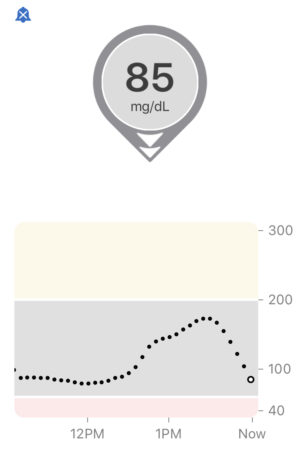
This oral glucose tolerance test went way better, but it put me on a ridiculous blood sugar roller coaster that day
- Chol/HDLC: 3.45 (down from 4.24 and 4.56) (want to be under 4.5, 4.0 is even better)
- TG/HDL: 0.73 (up from 0.70 but down from 1.12) (want to be under 2.0, 1.2 even better)
Other important 100g low-carb metabolic numbers
- HbA1c: 5.2 (back down from 5.4 and 5.2)
- Insulin: 2.2 (down from 3.0) (want to be under 4.5)
- cRP: 0.9 (slightly up from 0.88, could be same if Quest is rounding)
- Watch my post 100g carb Glucose Tolerance Test video (image below)
The 100g Low-Carb Hormones
Let's not forget that I was also running Beast Super Test Max, which clearly seemed to have an impact:
- Total Testosterone: 791 ng/dL (up from 681)
- Free Testosterone: 66.5 pg/mL (up from 63.5)
The lowest risk groups!
If you look at the studies referenced above, such as Framingham,[1] I have now moved from the second-lowest hazard ratio (0.7) to the lowest group of 0.6! My triglycerides are still well below 100, my HDL is still well above 40, but my LDL is now below 130 -- This could be a sweet spot!
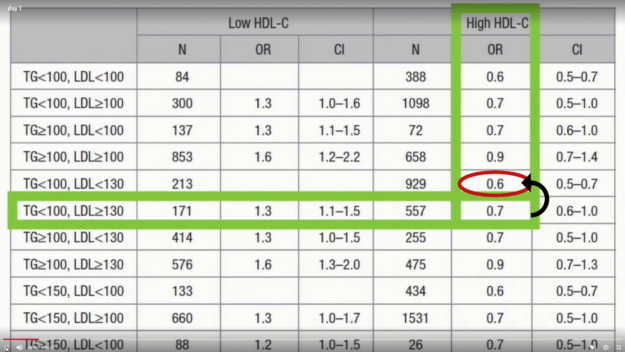
Shapow! Check out where I'm at with Framingham now! Admittedly, I went down a slight bit in a couple other studies. Bets hedged?
Further, my ratios are far better thanks to the triglyceride and total cholesterol dropping like a rock. HDL did go down a bit too though, so that may be something to keep an eye on over time. Many may argue that my 15% reduction of HDL was not worth the 39% reduction of LDL.
Truth is, I don't know if anyone can answer that, but a counterpoint is that my HDL is one point out of the best range in the Jeppesen data,[4] so it may behoove me to dial the carbs back down just a touch.
Either way, with the way the data's broken down in those four non-drugged observational studies, I'm now less likely to have a cardiovascular event in two of them than I was a month ago. Bets hedged?
The analysis: what's happening here?
There's an important part of this "Lean Mass Hyper-Responder" that needs to be called out. That's the word lean.
While I'm not a stage-ready bodybuilder, I'm definitely more on the skinny side than the fat side. And it seems to be to the point where a hardcore, long-term keto diet puts me in a relatively unknown state.
I'm at the point where my fat cells can no longer release enough triglyceride, so they start releasing cholesterol. I am churning LDL -- this is flux-based energy. Obviously, I'm still here, happy, and healthy, so our wonderful bodies are well-adapted to all kinds of incredible scenarios.
But at the end of the day, if you were to ask anyone, "is this LDL churn this a good thing or bad thing over the long haul?", the truthful answer is we just don't know.
Zero carb? Absolutely. Zero carb forever? Probably not...
This will be hotly debated. But in my opinion, for me, right here, right now, some level of carbohydrate is closer to optimal, as long as I can control the carbohydrate cravings / sweet tooth addiction -- which I definitely can when using them as a workout aid only.
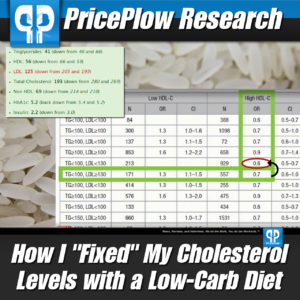
Did going from a nearly zero carb diet to a low carb diet "fix" my lipids? This is arguable, but I'm not convinced LMHR is best 24/7/365.
In the keto/carnivore community, we love to argue about whether or not carbohydrates are "natural" or "species appropriate". I think the answer is clear if you look at nearly any tribe that's in a temperate climate: it's cyclical, but when they're available, you can be damned sure that they eat them. And a lot of them at that.
Given that my ancestors weren't eskimos, it's worth considering that we're going to use those summer/fall harvest times to fatten up for winter.
Of course, those tribal individuals are obviously their feet more, and aren't eating refined garbage mixed with toxic seed oils disguised as "vegetable oils". If I can have the best of both worlds - preferably using sources that I know don't mess me up (my favorites are yams, white rice, and supplements like Carb10 and Cluster Dextrin), I feel like this is more optimal living for me.
Personal Take: Carbs can be annoying
The truth is that I didn't really enjoy this dosage of carbs at first. It may seem low carb to many "standard American dieters", but it's high-carb to me.
It all came down to timing -- I let the experiments above ruin my days. I would train fasted in the AM, then do a carb experiment, and then wait two hours to see how I reacted on the CGM. By that time, half of the day was wasted and I had to panic to eat a ton of protein. This led to days like my brutal OMAD Blood Sugar Reset.

Heart Healthy Breakfast or Child Abuse?! Long story short - STOP eating carbs alone! This is why you are hungry every two hours!
Despite the fun YouTube videos, I couldn't go on like this. I needed to load most of the carbs pre-workout, and maybe a bit more during workout, and then trace carbs throughout the rest of the day. Pre workout is where I like them, and I find that I can get back to "normal" (eg. generating a few ketones and generally feeling good) if my training was hard enough.
Anyway, I stuck with the 100g carbs and found my pre workout sweet spot.
Up next: Cyclical Keto Diet Bulk?
I think I've proven that I can get lean enough -- too lean for my tastes. The near-carnivore diet got me leaner than I ever have (at least without literally swimming miles every day). But I don't need to be any leaner. I need to be stronger. I want to be heavier. I want to fill my shirts out again.
And quite frankly, I do not believe a carnivore diet can really be used to pack on much muscle. Insulin levels just seem to be too low, and I do want to spike them during anabolic moments. And I'm simply never hungry.

A decently-done OMAD can "reset" blood sugar levels after a rough day, but keep protein high!
But knowing how well eating red meat does for me, perhaps I can marry both worlds. It's time to try a cyclical keto diet, with aggressive carbohydrates in the AM during training, and my near-carnivore red meat heavy diet for the rest of the time.
So the question is, can I do the following simultaneously?
- Keep LDL below 130 or so
- Eat 50-75 carbohydrates before and during workouts (and sometimes after if doing a CGM experiment)
- Add Lean Mass (I use an ArboLeaf scale to track)
- Generate ketones on the non-carb half of the day
That's where we're going next. No doubt, it's going to take harder workouts and better sleep. Win or lose, stay tuned, you know blood work will come.
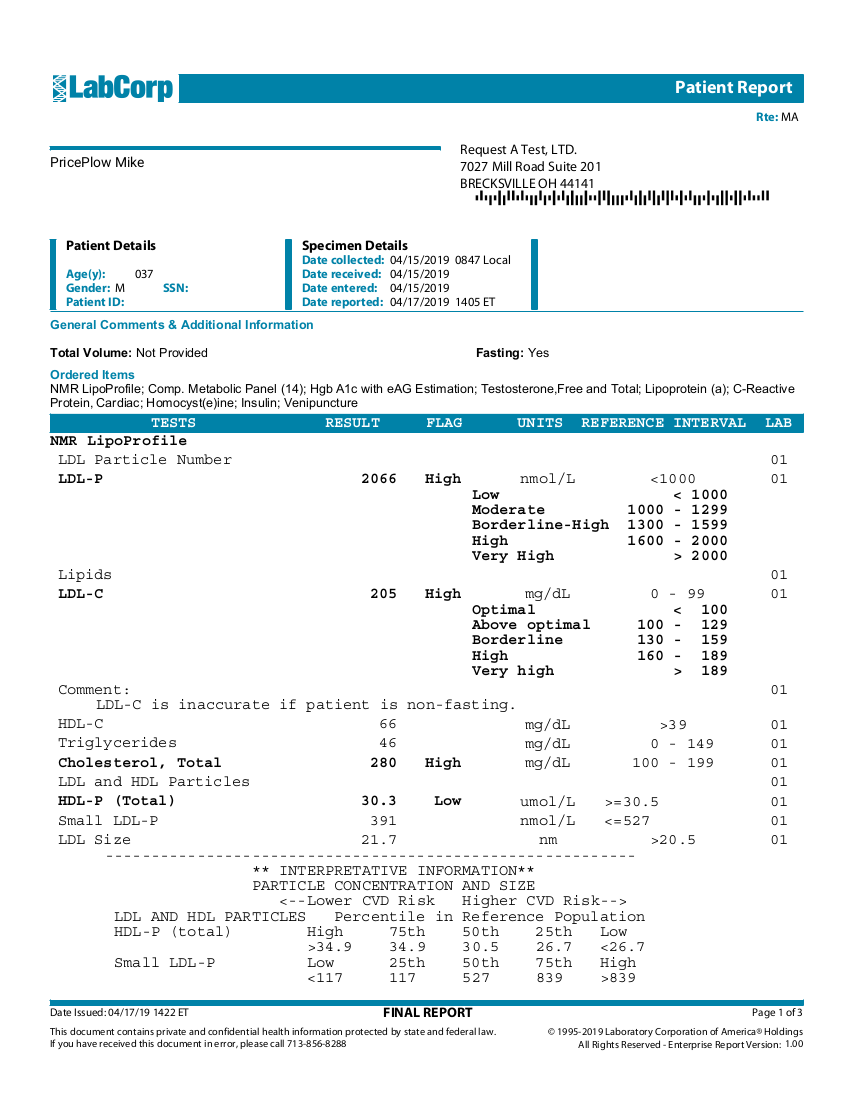
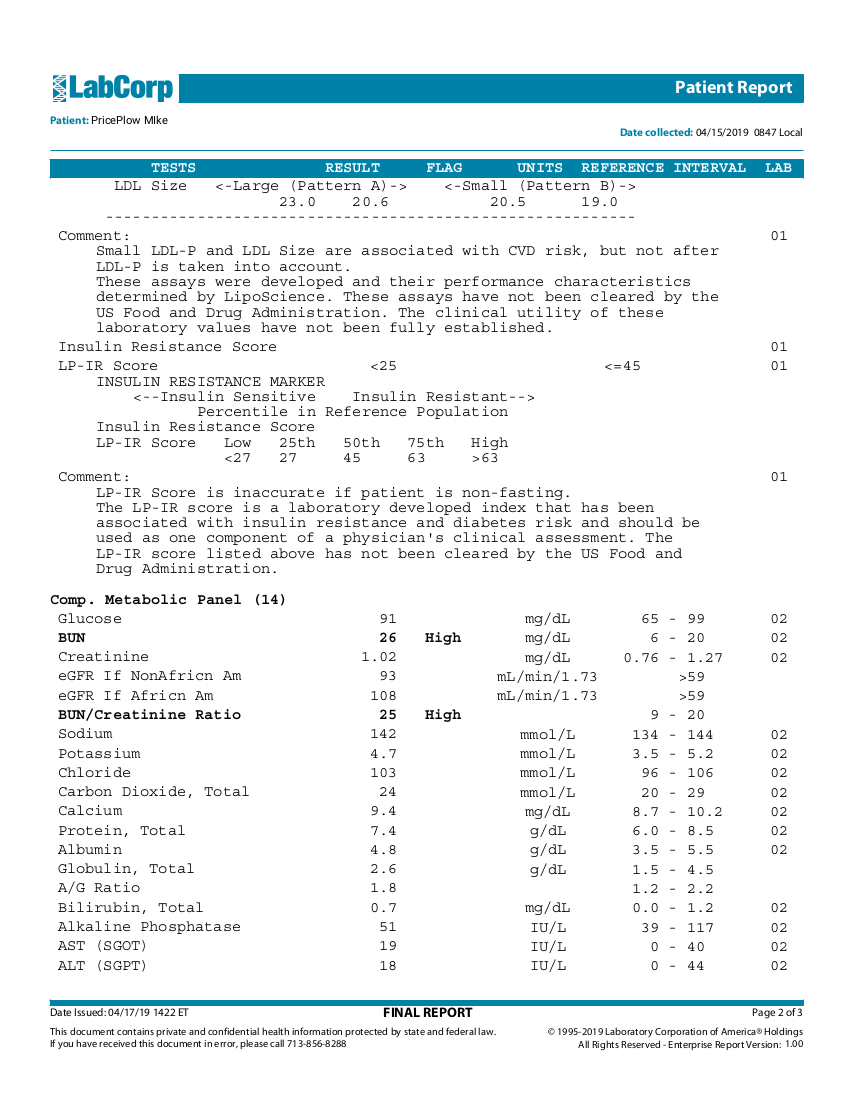
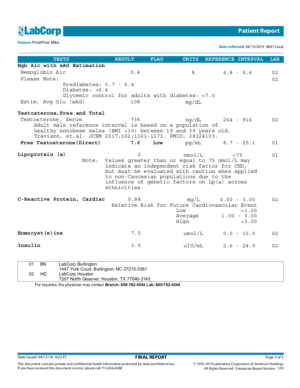
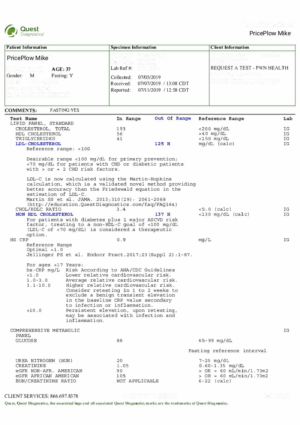
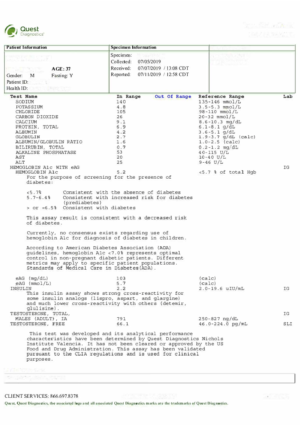


Comments and Discussion (Powered by the PricePlow Forum)